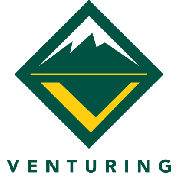
Sports Group
To earn the Bronze Award for SPORTS
activities, do nine of the following:
- Demonstrate by means of a presentation at a
crew meeting, Cub Scout or Boy Scout meeting, or other group
meeting that you know first aid for injuries or illnesses that
could occur while playing sports, including hypothermia;
heatstroke; heat exhaustion; frostbite; dehydration; sunburn;
blisters, hyperventilation; bruises; strains; sprains; muscle
cramps; broken, chipped, loosened, or knocked-out teeth; bone
fractures; nausea; and suspected injuries to the back, neck, and
head.
- Write an essay of at least 500 words that
explains sportsmanship and tells why it is important. Give several
examples of good sportsmanship in sports. Relate at least one of
these to everyday leadership off the sports field.
OR
Make a presentation to your crew or a Cub
Scout or Boy Scout group of at least 30 minutes with the same
requirements as for the essay.
- Take part as a member of an organized team
in one of the following sports:
| baseball, |
basketball, |
bowling, |
| cross-country, |
diving, |
fencing, |
| field hockey, |
football, |
golf, |
| gymnastics, |
lacrosse, |
rugby, |
| skating (ice
or roller), |
soccer, |
softball, |
| swimming, |
team handball, |
tennis, |
| track and
field, |
volleyball, |
water polo, or |
| wrestling |
(or
any other recognized sport approved in advance by your
Advisor except boxing and karate). |
|
|
|
|
- Organize and manage a sports competition,
such as a softball game, between your crew and another crew,
between two Cub Scout dens or packs, between two Boy Scout patrols
or troops, or between any other youth groups. You must
recruit at least two other people to help you manage the
competition.
- Make a set of training rules for a sport
you pick. Design an exercise plan including selected exercises for
this sport. Determine for this sport the appropriate target heart
rates and desired training effects. Follow your training plan for
at least 90 days, keeping a record showing your improvement.
- Make a tabletop display or give a
presentation for your crew, another crew, a Cub Scout or Boy Scout
group, or another youth group that explains the attributes of a
good team leader and a good team player. Select athletes that
exemplify these attributes.
- Make a display or presentation on a
selected sport for your crew or another group covering
- etiquette for your sport,
- equipment needed,
- protective equipment needed and why it
is needed,
- history of the sport, and
- basic rules.
- Research and then, at a crew meeting or
other youth group meeting, manage a discussion on drug problems as
they relate to athletes.
- What drugs are banned?
- What impact do these banned drugs have
on the human body and mind?
- Where can information about drugs be
found?
- How do some sports organizations fight
sports drug abuse?
- Cover at least the following drugs:
| stimulants, |
painkillers, |
anabolic steroids, |
beta blockers, |
| diuretics, |
alcohol, |
marijuana, and |
cocaine. |
|
|
|
|
- Research and then, at a crew meeting or
other youth group meeting, manage a discussion on recent training
techniques being used by world-class athletes. Compare them to
training techniques of 25 and 50 years ago. (This must be
different than the discussion in requirement 8).
- Study ways of testing athletes for body
density. Fat content can be measured by skin-fold calipers, body
measurements, and hydrostatic weighing. Then recruit a consultant
to assist you as you determine the body density and fat content
for your fellow crew members at a crew meeting or special
activity.
- Select a favorite Olympic athlete, a highly
respected athlete in your city, or a favorite professional athlete
and research his or her life. Make an oral presentation or
tabletop display for your crew or another group.
- Explain the importance of proper nutrition
as it relates to training for athletes. Explain the common eating
disorders anorexia and bulimia and why they are harmful to
athletes.
[Activities or projects that are more
available in your area may be substituted with your Advisor's
approval for activities shown above.]
 Return
to Bronze Award
Return
to Bronze Award
|


